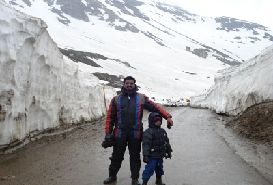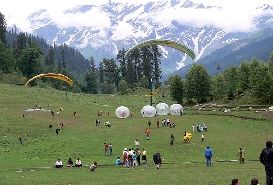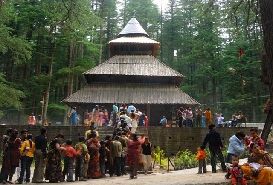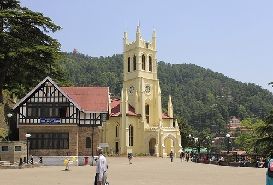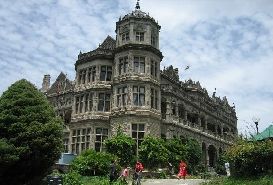The Nati folk dance is one of Himachal Pradesh’s most significant cultural expressions, recognized in the Guinness Book of World Records as the largest folk dance performance. This traditional dance form beautifully captures the essence of Himachali culture through rhythmic movements that mirror the region’s flowing rivers, swaying trees, and gentle mountain breezes.
Historical and Cultural Significance
Nati traces its origins to ancient times, with its themes drawing from Hindu epics like the Ramayana and Mahabharata. The dance serves multiple cultural purposes:- Celebratory ritual for harvests, marking the successful reaping of crops
- Religious expression to honor local deities during festivals
- Social bonding during weddings, births, and community gatherings
- Seasonal marker, especially during Losar (New Year) festivities
Check out Himachal pradesh Tour Packages, Solang Valley Tour Packages, Shimla Tour Packages, Sangla tour packages
Performance Style and Characteristics
A traditional Nati performance features distinctive elements:- Formation: Dancers arrange themselves in circles or rows
- Participants: Mixed groups of men and women
- Movement: Graceful, measured steps with gentle swaying motions
- Expression: Performers maintain warm smiles throughout
- Costume: Colorful traditional attire with distinctive regional variations
- Adornment: Dancers often wear feathers in their hair
- Musical accompaniment: Traditional instruments including Dhol, Nagara, Shehnai, Karnal, and Narsinghe
- Vocals: Folk songs in local dialects narrate stories
Seven Regional Varieties of Nati
Himachal Pradesh’s diverse geography has given rise to regional variations of Nati, each with unique characteristics:- Kulluvi Nati: Performed prominently during Dussehra, depicting Lord Krishna’s ras-lila with the Gopis. Kullu Valley’s signature dance features intricate footwork.
- Kinnauri Nati: Celebrated during the New Year Festival, this variation from Kinnaur reflects the bucolic landscape with movements mimicking nature. Characterized by more elaborate costumes with distinctive headgear.
- Sirmauri Nati: From the Sirmaur region, featuring faster tempos and more energetic movements compared to other variations.
- Shimla Nati: The variation from around the capital region, known for its balance of grace and energy.
- Lahauli Nati: From the Lahaul region, incorporating influences from neighboring Tibetan traditions.
- Mahasuvi Nati: Distinguished by its unique rhythm patterns and ceremonial significance.
- Gaddi Nati: Performed by the Gaddi tribal community, featuring distinctive shepherd-inspired movements and themes.
When and Where to Experience Nati
Travelers can witness authentic Nati performances during:Major Festivals
- Kullu Dussehra (October): The Kulluvi Nati is prominently featured during this week-long celebration
- Losar (February): New Year celebrations throughout the state feature various Nati performances
- Lohri (January): Harvest festival with enthusiastic Nati dancing
- Minjar Festival (July/August): Celebrated in Chamba with distinctive regional Nati variations
Cultural Events
- Shimla Summer Festival (June): Features curated Nati performances
- International Kullu Dussehra Festival: Recognized globally, attracting performers from across the state
- State Day Celebrations (January 25): Official cultural programs prominently feature Nati
Year-Round Opportunities
- Cultural centers in Shimla, Dharamshala, and Manali offer regular performances
- Community celebrations in villages throughout Himachal Pradesh
- Wedding ceremonies often include Nati performances (though these are private events)
- State-sponsored cultural shows at tourist destinations
Participating in Nati
For travelers interested in more than just watching:- Several cultural centers offer workshops where visitors can learn basic Nati steps
- The State Department of Language and Culture occasionally organizes dance camps
- Local guides in tourist areas can arrange participatory experiences with advance notice
- Homestays in rural areas often include cultural evenings where guests are invited to join
Preserving the Tradition
Nati’s significance extends beyond entertainment—it serves as a living repository of Himachali cultural heritage. The state government has established several initiatives to preserve and promote this art form:- Documentation projects capturing regional variations
- Training programs for younger generations
- Inclusion in school curriculums throughout the state
- Regular competitions and festivals
Check out Kullu Tour Packages, Kibber Tour Packages, Kasauli Tour Packages, Dalhousie Tour Packages, Tabo tour packages
Experience Nati on Your Himachal Pradesh Tour
You can witness and even participate in authentic Nati performances with our customizable Himachal Pradesh tour . Our local experts can arrange visits to coincide with festivals or connect you with cultural centers featuring regular performances. The arts of Himachal Pradesh offer travelers a window into the region’s soul, with Nati dance standing as perhaps the most vibrant expression of Himachali identity and tradition. Whether you’re drawn to the energetic movements of Sirmauri Nati or the nature-inspired grace of Kinnauri Nati, experiencing this folk dance provides a deeper understanding of Himachal Pradesh’s cultural landscape—one that has maintained its distinctive character despite modernization.Contact us to customize your cultural tour of Himachal Pradesh, including opportunities to witness authentic Nati performances in their traditional settings.







